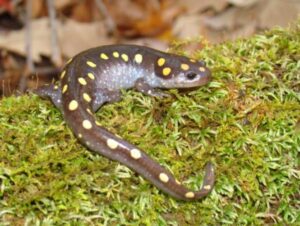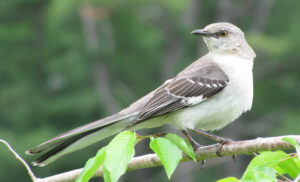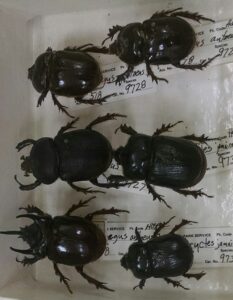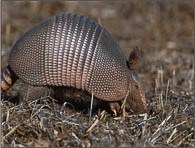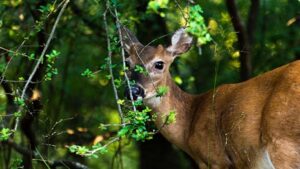Wildlife within the park is typical of the Ouachita mountains region, consisting mostly of rodents, bats, and other small mammals. Because of the region’s mild climate, bird species are varied and plentiful. Aquatic resources are limited to portions of several small creeks and are void of significant game fish.
Amphibians
Amphibians are a type of animal that spends one or more stages of life in the water. They include frogs, toads, and salamanders.
Birds
Hot Springs National Park supports a variety of songbirds, wild turkeys, raptors, and other birds. Birding is possible all year long, as the species often change with the spring and fall migrations.
Insects, Spiders, Centipedes, Millipedes
Insects, spiders, and bugs make up the dominant form of life in the park. As the weather changes, so do our insect populations. In the spring, keep an eye out for caterpillars, Luna moths, and fireflies. In the summer, expect to find more mosquitoes and bats.It is estimated that roughly 35,000 to 40,000 different insect species live in the state of Arkansas, including 10,000 species of beetles, 9,000 species of flies, 8,000 species of bees and wasps, and around 5,000 species of moths and butterflies. This rich diversity is the result of varied topography and favorable climates across the state.
The Arkansas Ouachita and Ozark mountains are home to many endemic species, which can only be found in this region and nowhere else on Earth. More than thirty have been documented, and new ones are added to the list frequently.
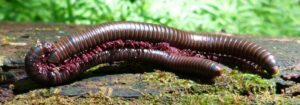
Mammals
Mammals—along with birds, fish, amphibians, and reptiles—belong to a large group known as the vertebrates. Mammals share common features with each other, including being homeothermic, having hair, having mammary glands, and being able to give live birth.There are more than 5,000 different mammalian species in the world, with around 500 being found in North America. Of those, around seventy wild species reside in Arkansas, and roughly 49 can be found within the park.
